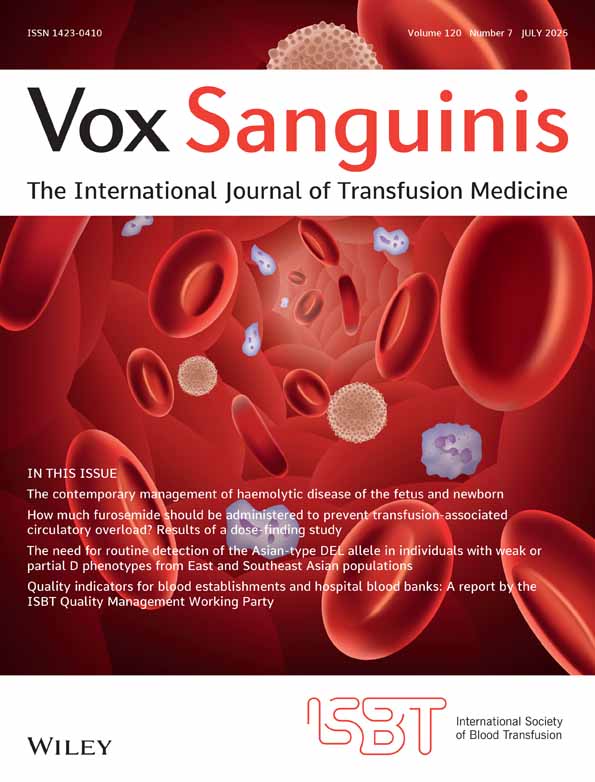Prolonged Storage of Red Cells: The Effect of pH, Adenine and Phosphate
Abstract
Prolonged storage of red blood cells (RBCs) at 4 °C results in decreased intracellular ATP levels with diminished posttransfusion survival. Meryman described a preservative medium, exceptional in its capacity to increase these intracellular levels during the first weeks of storage and later in maintaining adequate levels, for extended storage periods. We modified this medium, investigated its constituents, and found that its ATP-preserving effect was unrelated to its tonicity or to the presence of mannitol. Throughout storage, RBC potassium leakage and lactate production were moderate. No evidence of osmotic swelling was detected. In spite of high ATP levels, the cells became echinocytes, thus discounting a direct correlation between shape and metabolic status. The most striking finding in this study was that the prestorage pH of the blood unit (pH 7.0), has a crucial contribution in elevating nucleotide levels in a medium containing high levels of phosphate (18–10 mM) and adenine. We suggest that a combined effect of optimal pH, adenine, glucose and phosphate in the medium contributes to the ability of the RBCs to synthesize the necessary purine nucleotides by the ‘salvage pathway’.




